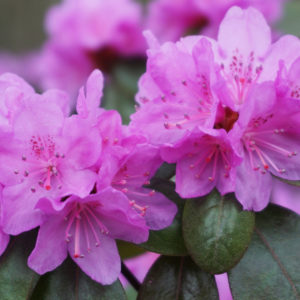By Catherine Cooper- Updated for 2023!
New England is renowned for its fall foliage of fiery reds and oranges, but as anyone who has experienced at least a few northeastern autumns will tell you, some years are better than others. So what factors influence the intensity and duration of fall colors?
In temperate regions, deciduous trees lose their leaves and go dormant through winter as a means to conserve energy during a time when it would be difficult for them to continue growing. Deciduous leaves cannot withstand the cold and rigors of winter and so the tree sheds them.
According to the U.S. Department of Agriculture Forest Service, there are three factors influencing fall leaf color:
• Length of night
• Leaf pigments
• Weather.
Lengthening nights are the triggering factor for fall colors, as they signal that winter is not far away. This starts a chain of biochemical reactions resulting in leaf drop. The change in colors we see is due to the altering concentrations of pigments within the leaves.
The green visible in spring and summer is due to chlorophyll in the leaf cells. It is the means by which trees photosynthesize sunlight, carbon dioxide and water into sugars, which are the fuel for growth. During the growing season, chlorophyll is continuously replenished, but come fall, it ceases to be produced. The disappearance of chlorophyll from leaves allows other pigments to become visible.
The yellows and oranges that become visible in leaves in fall are due to carotenoid pigments. Carotenoid pigments are also present in leaves during the growing season, but are masked by chlorophyll. During the growing season carotenoids have two primary functions. They assist chlorophyll in energy production by absorbing light from those wavelengths that chlorophyll absorbs poorly, and then pass it on to chlorophyll for conversion into sugars. Carotenoids also have a secondary function, which is to regulate amount of energy within the leaf. While each leaf is adapted to tolerating a certain amount of light energy depending on where it is situated, there are times in the day when this may be increased. When leaves are temporarily exposed to more sunlight than normal, they risk an imbalance in their photosynthesizing processes, which can result in damage to their cell structure. Carotenoids have the ability to disperse this excess light energy and thus prevent any damage. In addition, it is thought that carotenoids may also serve a similar protective function in fall while leaves are transferring sugars back to the tree itself.
Another pigment that becomes noticeable in fall is anthocyanin, which is what gives foliage its red and purple coloration. In some trees, this increases as the tree prepares to shed its leaves, as anthocyanin works to protect leaf functions while leaves attempt to send all sugars back into the branches of the tree to be stored until spring. Anthocyanin levels vary throughout the seasons, as it performs several functions – protecting leaves from stressors such as cold and freezing, drought, heavy metal contamination and physical damage. It also assists in maintaining leaf functions by filtering excessively strong sunlight and UV rays so they do not damage cell structure. Its color also discourages certain herbivores or insect pests. There is also a hypothesis that some trees evolved red fall foliage as a warning to insect pests which lay their eggs then, not to lay their eggs on these trees as the foliage is not palatable.
While leaves are working to return their sugars to the tree, they are also preparing to be shed. A sealing layer is gradually formed at the base of the leaves, which allows leaves to fall without damage to the tree itself. If at this point you are wondering about purple-leafed plants, their leaves permanently contain enough anthocyanin to mask the chlorophyll and so they appear purple. In the case of some plants it is hybridization which has encouraged this trait, but as purple leaves do serve protective and deterrent functions, they do occur naturally.
And finally, what has weather got to do with it? Cool, but not frosty nights and warm, sunny days in fall enhance the amount of anthocyanin in leaves, bringing out those shades of red. Conversely, mild nights and cooler days will dull the vibrancy of fall colors in general. Moisture also plays a part. Color is best when trees have received adequate moisture throughout the year: a late spring or summer drought can delay fall color, and a summer drought can stress trees enough to cause early leaf drop with minimal fall color.
The summer of 2023 has been one of the wettest on records. We are starting to see some early yellowing of leaves due to overly wet soils from all the recent rains. When roots are too wet, they can’t breathe causing trees to shut down and stop delivering water and nutrients to the leaves. Later color could still be abundant for many trees that have not started to turn yet. A lot depends on the soil profile. Lastly, leaf drop will be precipitated by hard frosts, strong winds and heavy rain storms. All these factors combine to make each fall different, some better than others, and so those years when we get to see fall colors in their full glory are a real treat.
Sources:
https://www.fs.usda.gov/visit/fall-colors/science-of-fall-colors
https://biology.appstate.edu/fall-colors/hidden-colors-leaves-what-are-functions-those-yellow-
https://www.canr.msu.edu/news/how_weather_affects_fall_colors








